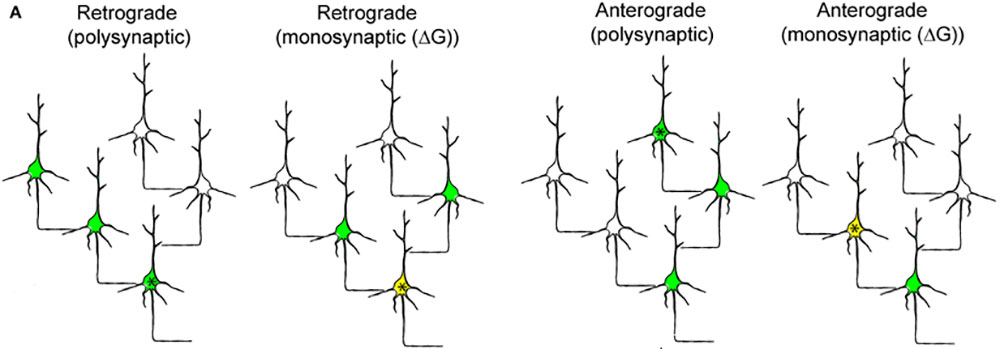- E-mail:BD@ebraincase.com
- Tel:+8618971215294
Vesicular stomatitis virus (VSV) belongs to the genus Vesiculovirus of the family Rhabdoviridae, and is an enveloped single-stranded negative-sense RNA virus. Although VSV can replicate in the CNS, the use of VSV as a tracer virus was reported later than other viruses. After peripheral tissue infection, the body's innate immune system will quickly terminate the replication of VSV virus and clear it, so it is not suitable for marking the peripheral to central circuit, and it is widely used in central nervous circuit research.
VSV can infect a variety of animal models, including rodents, fish, birds, and non-human primates. It is characterized by fast replication and trans-synaptic speed, super high expression of exogenous genes, and fine morphology of neurons can be obtained.
The envelope glycoprotein (glycoprotein, G) of VSV is an essential protein for its anterograde cross-synapse. VSV without G protein (VSV-ΔG) will lose its ability to cross-synapse, while its genome replication and transcription will not be affected (it can continue to express foreign genes in high abundance). Therefore, VSV-ΔG virus can be used to quickly obtain a complete picture of the distribution of neuronal projections, and can also be used to develop an anterograde mono-transsynaptic tracer system.

Figure 1. Schematic diagram of VSV-specific forward transsynaptic transmission (Beier KT et al. Frontiers in Neural Circuits. 2013.)
| Serie No. | Product name | Illustration |
| BC-VSV-Vs03 | VSV-EYFP | anterograde,Green |
| BC-VSV-Vs13 | VSV-mCherry | anterograde,Red |
| BC-VSV-Vs28 | VSV-WT | Wild type,no color |
| BC-VSV-Vs31 | VSV-∆G-EYFP | Transformable pseudoviruses and oncolytic viruses |
| BC-VSV-Vs33 | VSV-∆G | Functional components can be added, Transformable pseudoviruses and oncolytic viruses |